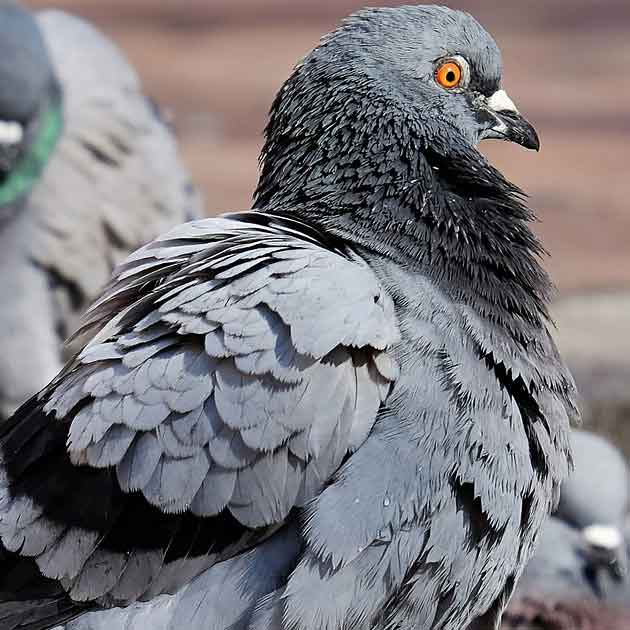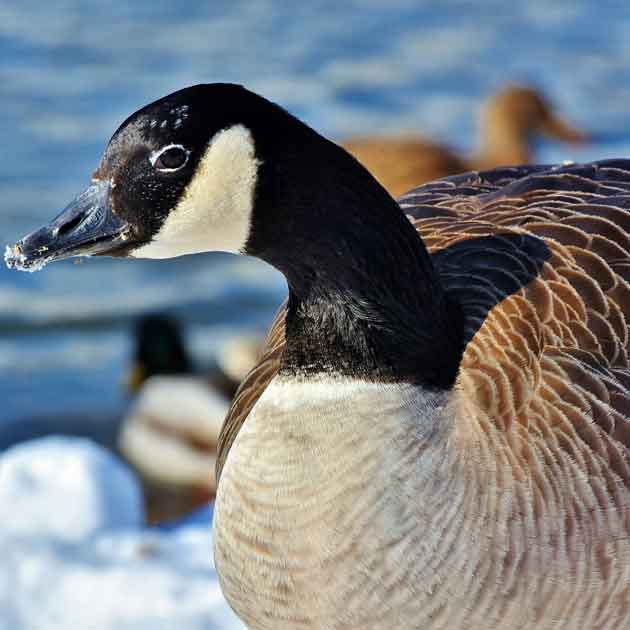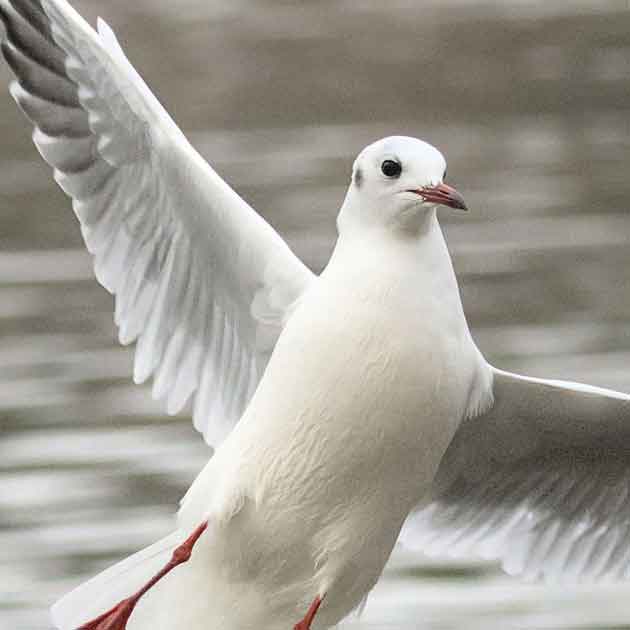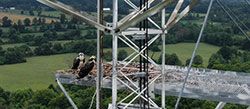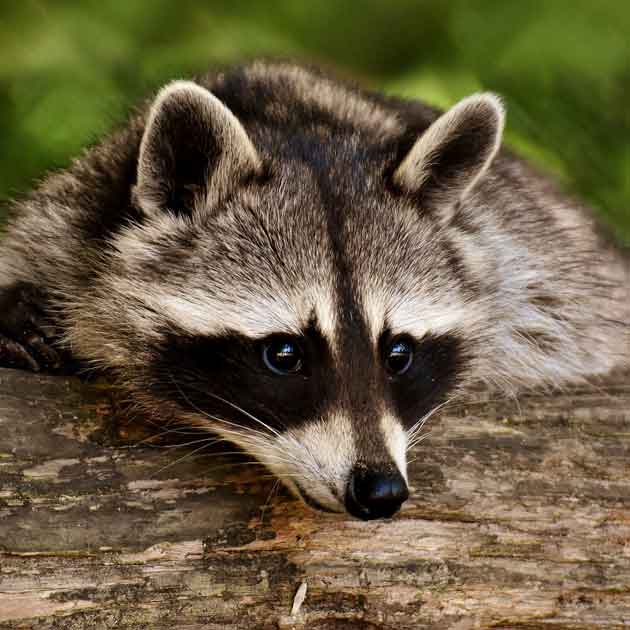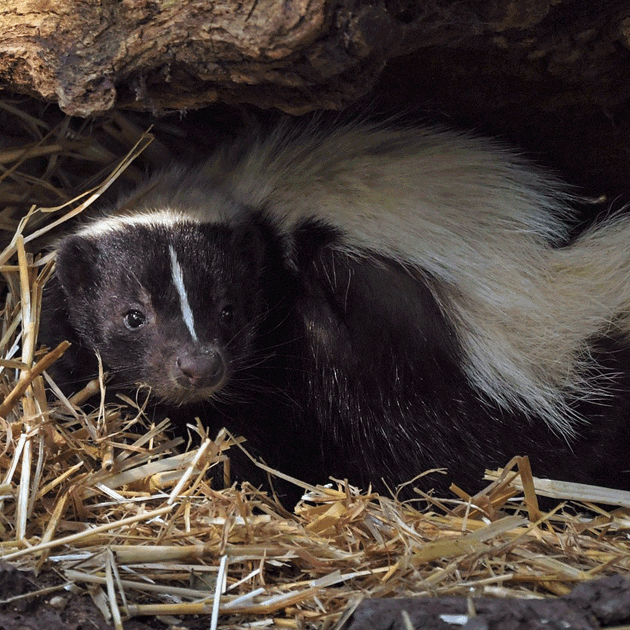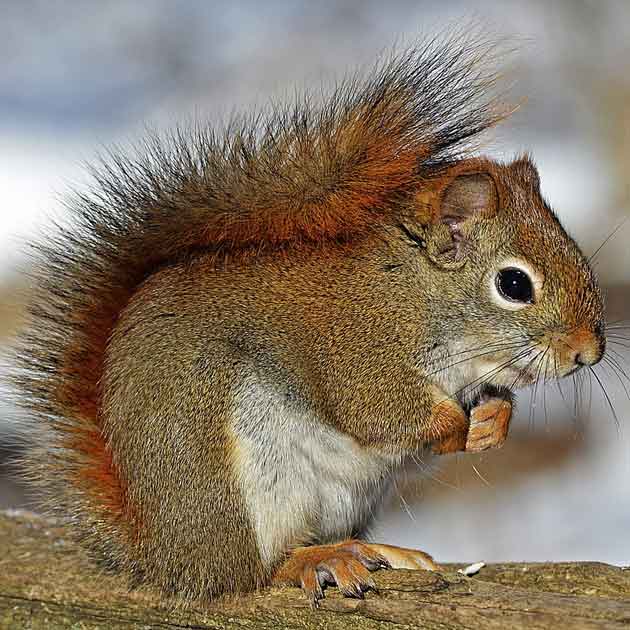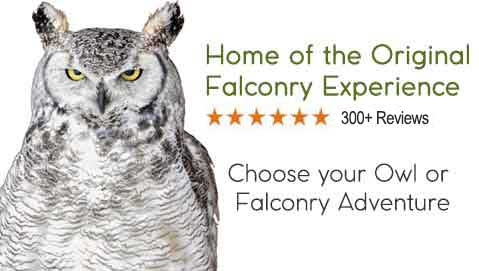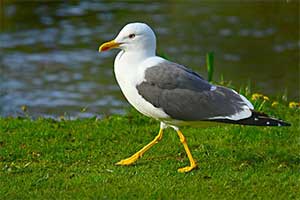 Seagulls are an undeniable fixture of the spring and summer landscape and are often seen in large flocks around open fields and bodies of water. The word "seagull" is a catch-all term for many species of gulls. The most common breeding gulls in southern Ontario are the Herring Gull and Ring-Billed Gull. Gulls are referred to as "colonial nesting waterbirds" because they gather in large groups to nest and breed. They often nest in wide open, clear spaces, like large flat rooftops, and will build minimal nests from grasses, sticks, moss, or basically anything they can find. Not only do they gather in the nesting season, but gulls congregate year-round in roosting flocks or around food sources.
Seagulls are an undeniable fixture of the spring and summer landscape and are often seen in large flocks around open fields and bodies of water. The word "seagull" is a catch-all term for many species of gulls. The most common breeding gulls in southern Ontario are the Herring Gull and Ring-Billed Gull. Gulls are referred to as "colonial nesting waterbirds" because they gather in large groups to nest and breed. They often nest in wide open, clear spaces, like large flat rooftops, and will build minimal nests from grasses, sticks, moss, or basically anything they can find. Not only do they gather in the nesting season, but gulls congregate year-round in roosting flocks or around food sources.
Why are gulls roosting or nesting on my property a problem?
In large groups, gulls can be incredibly loud and intrusive. Further, in some public places like beaches, parks, and marinas, gull populations have become quite bold. They don't hesitate coming right up to humans and attempting to (and sometimes succeeding in) stealing food. Not only are they annoying, but gulls can cause a lot of damage to property. When in large groups, it doesn't take long for all available spaces to become coated in feces. Gull feces are highly concentrated in uric acid and act as a corrosive agent. This can damage boats, buildings, roofs, and rooftop industrial machinery. Gull droppings are also known to carry dangerous bacteria that contaminate water sources or become airborne. This can also be a considerable health concern; seagull feces and feathers can enter and clog your HVAC system, causing poor and sometimes unworkable air quality within the building that can easily halt production. When gulls gather to nest in a particular area, there can be as many as ten thousand nests in a single site. Further, individual birds will return to the same place to nest each year unless convinced to do so otherwise. Gulls also become very aggressive towards perceived predators to protect their nests and chicks. They will dive bomb people who venture too close, and while they usually do not make contact, it can be very frightening.
When do gulls start nesting, and when can I do something about it?
Depending on the species, gulls typically pair up and establish territories by mid-March to early April. They lay eggs around mid-May, which will hatch in mid-June. After that, the chicks will remain flightless and dependent on their parents for up to 4 weeks. Once gulls have chosen a nesting site, it is difficult to get them to leave, so deterring them from nesting early in the season is the best way to keep them away.
Because gulls are a protected migratory species, most action taken to deter or control gull populations requires a Canadian Wildlife Services (CWS) Migratory Bird Permit. Different permits allow for the scaring, hunting, and disposal of gulls and their nests and eggs. The best time to obtain a permit is in January and February, so action can be taken against the birds in early spring before they start nesting. The earlier Hawkeye can drive away from the gulls, the easier it will be. Hawkeye will find the right permits and will obtain them on the customer's behalf.
How do I discourage gulls from landing and nesting on my building?
Once gulls have established a nesting site and commit to it, it becomes much more challenging to get rid of them. Hence, the easiest course of action is to discourage nesting in the first place. Birds will scout potential nesting sites for 1 to 2 weeks before they start nesting. This is the period in which exclusion and scaring methods are most effective. Modifying the nesting site to make it unpleasant or impossible to land on and using scaring techniques to frighten them from the nesting site (if done early and consistently) is the best way to prevent nesting on your property.
Multiple architectural modifications can be made to reduce bird's ability to land on rooftops, ledges, and balconies. Doing so is a passive method to deter gulls from choosing your property as a breeding ground, and many of these methods do not require permits to carry out. However, they do require professionals to install, as incorrect installation can leave places for birds to land.
Gulls like to perch on flat, stable areas, so many products designed for bird repelling are intended to make ledges unstable or hard to perch on. Bird Coil, springy coils of stainless steel wire, and Bird Spikes, stainless steel or polycarbonate spikes, perform these functions. They are designed to prevent perching on long, narrow, and exposed ledges. They are durable and easy to install but are ineffective in snow or freezing rain and give buildings a prison-like appearance. Bird Wire, stainless steel wires stretched between posts at different intervals, functions in much the same way but is less conspicuous and approved for historical buildings. Bird Slide is a triangular wedge placed on "L" shaped ledges that remove the place to perch. They can be colour-coded to match that of the buildings and are visually unobtrusive. Bird Shock Flex-Track is another, more active method of gull deterrent. An electric track is laid on a ledge that delivers a painful but harmless shock to birds that land on it. After a few shocks, they learn to stay away. It is easy to install, durable, visually inconspicuous, and very effective. Finally, netting is an excellent method for excluding birds from enclosed areas, like balconies or machinery cases on rooftops. The durable net is installed so that it completely encloses the area to keep birds from entering. Though anti-perch systems are an effective method of getting rid of nesting or deterring gulls, they are often not practical for large open areas, like park grounds or flat rooftops.
How do I scare gulls away from my property?
Scaring gulls is another way to get rid of them before they have nested in an area. A common problem with this method is that although they may initially be frightened by sudden loud noises or other deterrent systems, they will soon become accustomed and still land in the same areas once the noise has subsided. After a short amount of time, the solution will become less effective than desired. This is why Hawkeye uses a variety of methods together to ensure the best results.
The use of pyrotechnics includes firing shells from a pistol or shotgun that produces a loud sound or light displays. When used alone, this will scare birds away for 1 to 2 weeks at the most before they get used to it. Hawkeye most often uses them in conjunction with birds of prey like falcons and hawks to scare them away from roofs. Unlike model owls or bird-shaped kites, raptors will actively chase and kill gulls, and therefore the gulls will not habituate. However, the raptor's effect only lasts a couple of days, so its presence must be maintained for at least a few days a week until the gulls have decided to nest elsewhere; this is usually between early April to late May. Dogs also pose an active threat to gulls on the ground, but it is hazardous for the dog to chase gulls on structures above the ground, like rooftops. Hawkeye also uses high-power lasers, shone into the gulls' eyes, to frighten them. This does not harm the bird, but it is uncomfortable for them. However, these lasers are only effective at night, must be operated by a trained professional, and are not legal in certain districts due to their effect on aircraft. Finally, in the right situations, hunting gulls with firearms is a viable solution. Though this method is very reliable, it requires a shooter to be established on the roof for 3 to 6 weeks, from sunup to sundown, to be effective. As they are a protected species, most CWS permits only allow the killing of a few birds to instil fear in the rest of the flock. Further, many people do not believe in lethal bird control methods, and hunting gulls is one such method that is very visible. Scaring gulls with firearms, pyrotechnics, birds of prey, and dogs with the intent to harm or kill them require a federal permit. Once the eggs are laid and chicks have hatched, scaring techniques are not allowed. Hawkeye's goal is to start early in the season using falconry and pyrotechnics to stop gulls from nesting altogether.
What do I do if the gulls have already nested?
Once gulls have nested and become attached to a particular area, they have not easily driven away. Though they can be scared off, they will return to their nests as soon as the threat is gone. With the right permits, Hawkeye can destroy and remove the nests and eggs. This will significantly reduce the number of birds because they no longer will have nests to protect. They can then be more easily scared away or excluded. Further, the gulls will see the area as unsafe for nesting and will not re-nest in the same or ensuing seasons. Removal of the nests makes an immediate and drastic difference in the number of gulls.
Hawkeye provides various scaring and exclusion methods to stop the gulls from landing and nesting that often work best in conjunction. If they have already nested, Hawkeye can remove the eggs and nests and remove the gulls with the appropriate permit. Though gulls are often very hard to remove from a specific area, Hawkeye can use these techniques to provide a long-term solution to your gull problem.
We are here to help you deal with Pest Bird Control and avoid potential health hazards, costly damage to property, and loss of product and/or productivity (especially in the food and healthcare sectors) if pest birds are not addressed immediately.
Now with 7 Locations ( 6 In Canada and 1 in the U.S), we are ready to serve you better in Acton, Toronto, Oshawa, Bowmanville, two locations in Mississauga and West Palm Beach in Florida.
Contact us today or Email us at [email protected] if you need help with pest bird control and/or pest bird removal.
Pest Birds like Cormorants, Crows, Ducks, Doves, Geese, Grackels, Seagulls, Pigeons, Robins, Sparrows and Starlings.
.


